105-year-old trolley tracks uncovered as part of Bartlesville's bygone era
Beneath the streets of Bartlesville lurks a century of history long forgotten and seldom brought to the light of day.
However, during the City of Bartlesville’s October street resurfacing project between 5th Street and Hillcrest Drive on Delaware Avenue, the contractor uncovered rails from the original Bartlesville Interurban at 9th Street and Delaware. The discovery was not a total surprise. Bartlesville has a host of History Heroes and Steve Roper of the City’s Engineering Department prepared to uncover the historic treasure with recovery costs built into the contract.
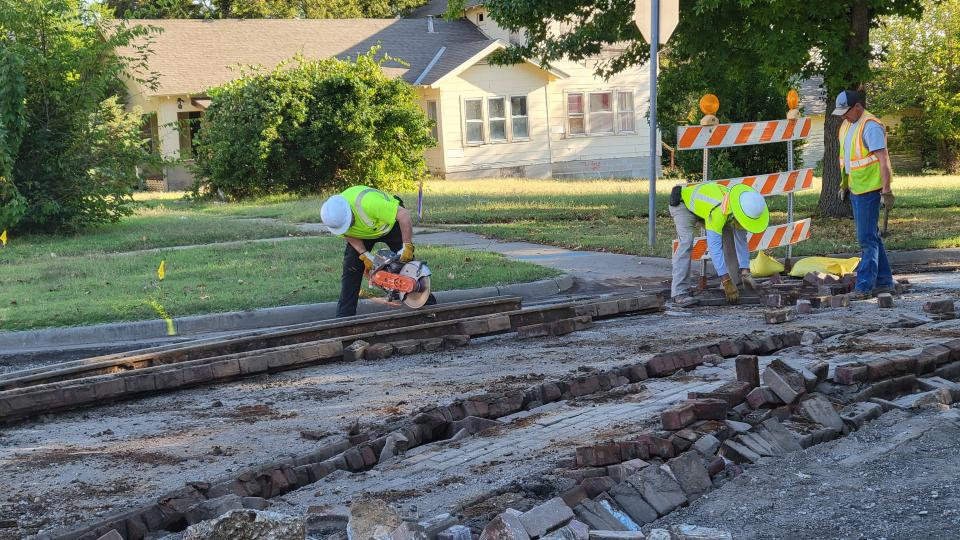
In August 1905, discussions began to bring an electric railway to Bartlesville; however, it was not until a year later that the Bartlesville Interurban Railway Company was organized. Some of Bartlesville’s notable men of the time sat on the Board of Directors including Frank Phillips, George B. Keeler, Frank Overlees and Joseph Bartles.
On June 10, 1907, the Interurban Electric Company accepted a 49-year franchise and construction began December 1907. Steel for bridges over the Caney River and Coon Creek arrived and soon three grading gangs were hard at work. The power house terminal and car barns were also under construction at the present site of Public Service Company’s office at 4th Street and Comanche Avenue.
To commemorate the official beginning of construction, on April 3, 1908, at 11 a.m. sharp, a “golden spike” was driven at Third Street (now Frank Phillips Blvd.) and Johnstone Avenue in the witness of over 2,000 spectators. With less than a mile of track laid, a week later, a one-day labor strike threatened forward progress. The strike was not the only construction problem, the project was plagued with financial and organizational issues, and May rains washed out the Caney River Bridge constructed for travel towards Dewey.
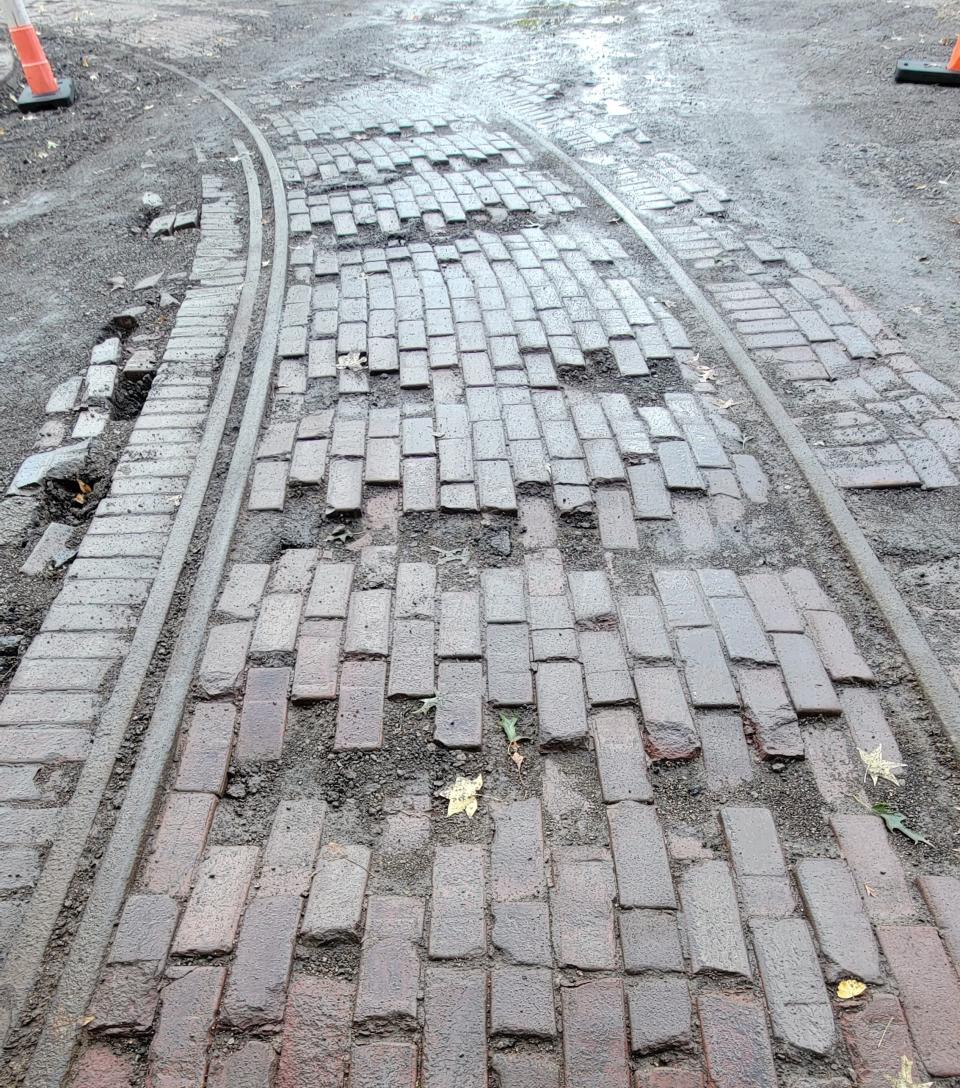
The Bartlesville Interurban Railway began running St. Louis Interurban cars between Bartlesville and Dewey in July 1908. The streetcars ran in both directions from the Power House terminal at 4th Street and Comanche Avenue, east across the Caney River railway bridge, through the community of Tuxedo, north to Dewey with a terminus at Don Tyler Avenue; and west from the terminal down 4th Street to Cherokee Avenue, north on Cherokee to 3rd Street/Frank Phillips Blvd., west on 3rd Street to Mound Street/Sunset Blvd., then south to the three smelters, ending at 14th Street. Then, the return trip.
Along the track, “switches” allowed the streetcars to pass. Traveling towards Dewey, the Phillips Switch was located a short distance from the Caney River Bridge crossing where George Ford established a housing community and the Gun Club opened a shooting range. Further north, a small doghouse structure near Minnesota Street was aptly named the “Dog House Switch/Little Bess Stop.” And the final switch of the trip was at downtown Dewey, near the Dewey Hotel, where the Interurban cars reversed the travel back to Bartlesville.
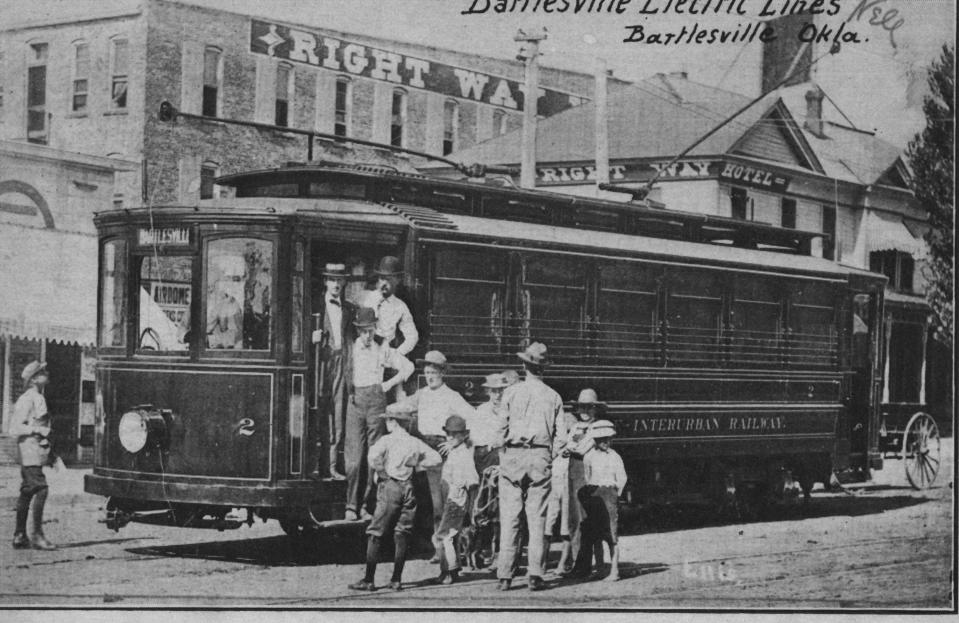
In Bartlesville, the 3rd Street Switch was between Keeler and Johnstone Avenues at the location of Parrett’s Dry Goods (now the Painted Horse). This switch allowed the Interurban cars to pass in route to and from “Smeltertown.”
With half-hour service, the south loop through Bartlesville’s housing addition was opened in December 1915 and traveled west from the Power House terminal at 4th Street and Comanche Avenue to Wyandotte Avenue, south on Wyandotte to 9th Street, west on 9th Street to Delaware Avenue, south on Delaware to 13th Street, west on 13th Street to Keeler Avenue, north on Keeler to 8th Street, east on 8th Street to Dewey Avenue, and north on Dewey to 3rd Street.
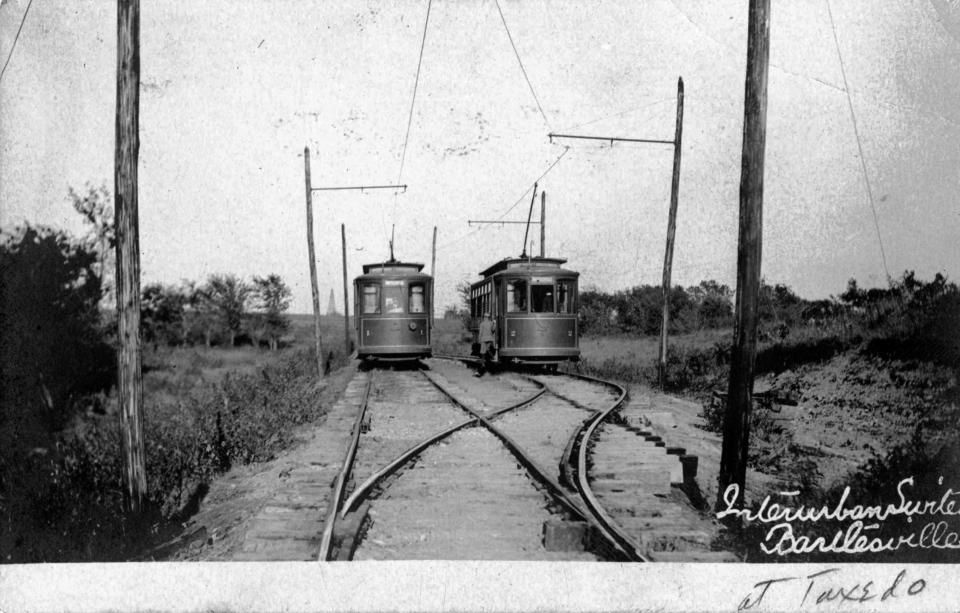
The 10-mile Bartlesville Interurban Railway operated for 12 years and one day; then, the eight St. Louis rail cars were returned to service in other U.S. locations. Public Service Company continues to operate at 4th Street and Comanche Avenue, the original location of the Interurban Powerhouse.
In many places throughout Bartlesville, remnants of the track secretly rest under years of asphalt, snuggled in a bed of Kansas Buffalo bricks, waiting for the City of Bartlesville’s next resurfacing project. During WWII, the government facilitated a scrap metal drive to help build ships, airplanes and tanks. At that time, the rail tracks in Dewey were pulled to aid the war effort; however, removing Bartlesville’s tracks was cost-prohibitive as the city’s brick streets had long been paved with asphalt.
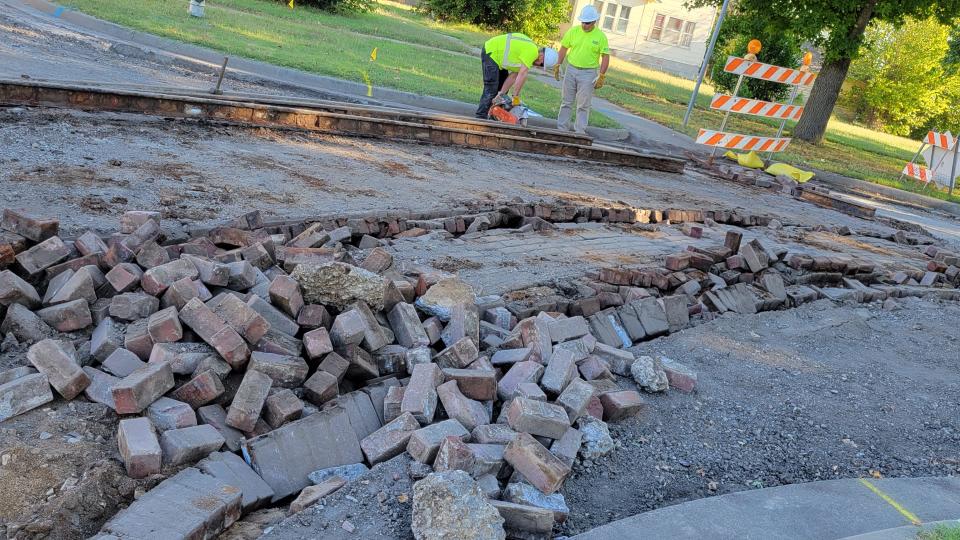
On Oct. 10, an army of workers went into retrieval mode at 9th and Delaware in Bartlesville, sawing the iron rails into movable sections and filling dump trucks with the Buffalo paver bricks. In addition, sections of the rails, bricks and rail spikes were retrieved and taken to the Bartlesville Area History Museum for future exhibit enhancements.
This article originally appeared on Bartlesville Examiner-Enterprise: Bartlesville workers discover 105-year-old remnants of bygone era

